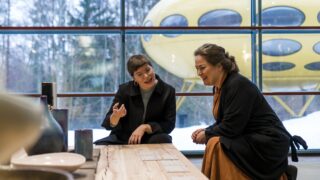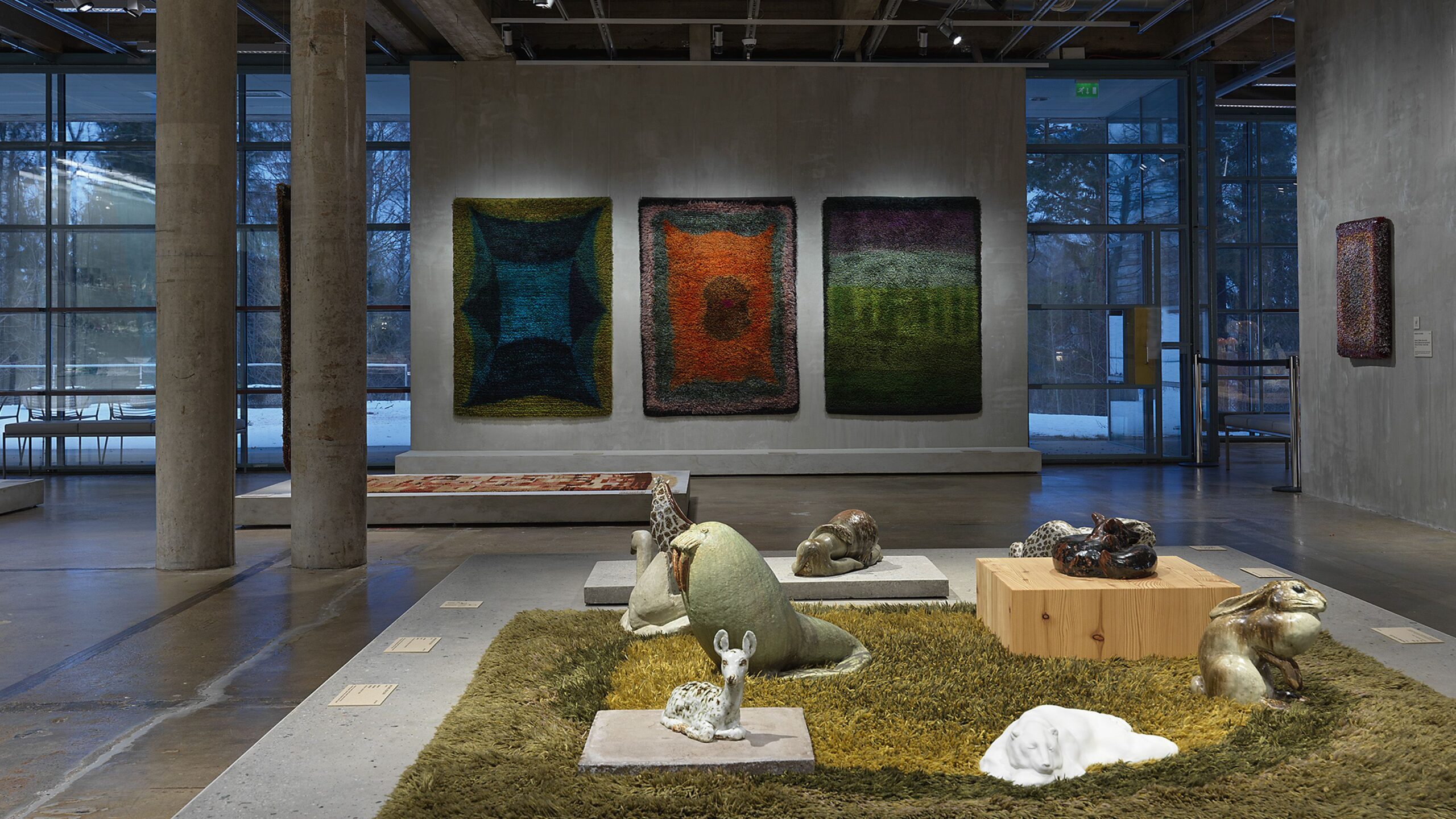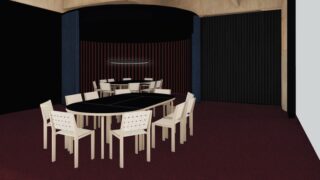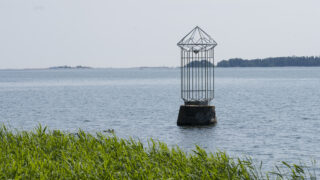Espoo Museum of Modern Art
Collection Kakkonen - The Materials of the Exhibition Space


Rammed earth

The pedestals in this gallery were made using the ancient rammed earth technique, where gravel and clay are compacted to stone-like hardness. The surface is then polished and finished with wax.
EMMA’s pedestals are a mixture of Finnish minerals and red clay sourced locally from Vihti. Applying circular economy principles, the mixture also contains recycled surplus clay and gravel left over from other projects. The smoky shade was achieved by blending Kalanti grey granite with carbon black.
Rammed earth is fully recyclable. By dissolving the clay in water, the all-natural, chemical-free raw materials can be reused and the clay can be remoulded without generating any waste. Rammed earth is estimated to generate less than 4% of the carbon emissions of conventional concrete.
Clay is a naturally breathable material that regulates interior humidity and thermal comfort. Its porous structure softens acoustics, and its air-purifying properties have been scientifically proved to improve indoor air quality.
Rammed earth is an ancient building technique that has been practiced all around the world. The raw materials are sourced locally, directly from nature, and the simple production method involves no energy-intensive processes such as firing.
Evidence of ancient earthen structures survive from thousands of years before the Common Era. The technique grew popular in Europe in the late 18th century, when urban development and shipbuilding were causing widespread deforestation – clay thus offered a cheap, readily available alternative to timber. The rammed earth technique also spread to the Nordic region, and some surviving late 18th century earthen constructions can be found in Finland, the oldest known structure still in use today being Krouvinmäki Inn, which was built in 1784 at the Strömfors Ironworks in Ruotsinpyhtää.
Larch wood

The large wooden platforms in the exhibition space are made of larch. The trees had grown for approximately one hundred years in the research forest of the Finnish Forest Research Institute in Punkaharju, eastern Finland. The old trunks were unsuitable for the fast-paced production schedules of today. The wood used for the platforms has continued to slowly adapt to its new form and environment: it has warped and cracked. Despite this, the objects on display remain safe. Museum staff monitor the behaviour of the wood and make adjustments to the displays as needed.
The larch trunks were first sawn into beams in spring 2022. They were then mechanically dried over several months to reach a moisture content of around 12%. In late summer, they were sawn again, and any warping that had occurred during drying was corrected. The beams were shaped into the desired form using a CNC machine. The platforms were constructed from the beams in November 2022, around eight months after the trees were felled. Despite digital precision, the wood continued to adapt to the museum environment. Signs of warping and cracking began to appear just a few months after installation.
Larch belongs to the pine family. It thrives in the cool, temperate regions of the northern hemisphere, preferring nutrient-rich soil and ample light. Larch does not grow or spread naturally in Finland; the larch forests found here have been planted. According to the Finnish Forest Research Institute, larch grows 20% faster than the common spruce native to Finland – known as the Norway spruce.
All the offcuts and surplus produced during sawing and planing were fully utilised by the carpentry workshop in Espoo that constructed the platforms.


